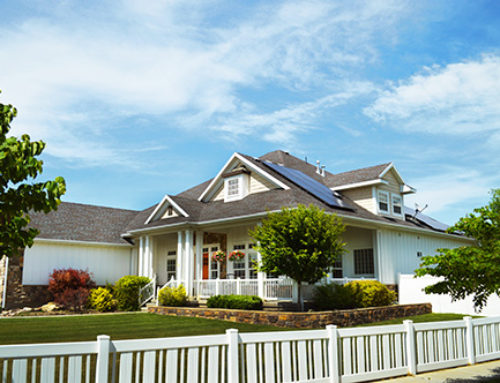Solar energy is becoming more and more common across the country and across the globe.
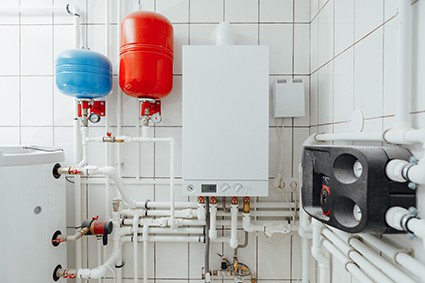
Thousands of consumers every year, ranging from homeowners to business owners, are seeing the social, economic, and environmental benefits to making the switch to solar. While solar PV, which allows you to harness the energy from the sun and turn it into electricity, is still the most common solar application, there are still a variety of other uses for this fuel we receive from nature every single day.
Some of the other more common applications of solar technologies are solar heating systems and passive heating solar design. They can both heat your home with little more than proper design and the light from the sun, and save you hundreds of dollars per year.
So, what are the most important questions to answer so that you can make the most informed decision possible about whether or not to make the switch to this inventive type of solar?
- How Can Solar Heat Your Home Passively?
- What Are The Main Components Of A Heating Solar System And How Do They Work?
- How Much Money Can I Save On My Heating Bill With A Solar System?
- Is There A Way To Reduce The Cost Of A Solar Heating System?
How Can Solar Heat Your Home Passively?
Passive solar is a design technique that, although it is incorporated into some of the most modern and energy efficient homes, has been around for thousands of years.
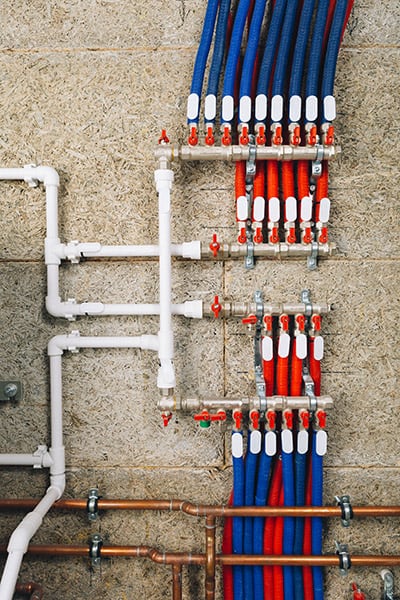
It it the practice of allowing natural light in your home to heat it in colder months so that you need to rely less on a more energy intensive heating system. This is done by installing very large windows in your home on the south facing side of the home or business. This then allows the maximum amount of light to come into your home throughout the day. It should be noted that in the southern hemisphere, the direction would be reversed so the windows should face the north.
Like solar cells, the floor of the home or business near the south facing windows will usually be a very dark color, such as black, so that it can absorb as much of the light as possible and retain the heat for a longer period of time. If the floors were a lighter color, they would reflect to much of the light and not hold on to the heat as well. These dark floors hold on to the heat from the natural light and keep the average temperature of the building much higher than traditional designs. Although this practice is hard to do in existing buildings, it can easily be incorporated into new construction.
What Are The Main Components Of A Heating Solar System And How Do They Work?
In a typical solar system designed for heating, there are four main parts. First is the solar collector which is designed to take in sunlight and trap some of the heat within itself.
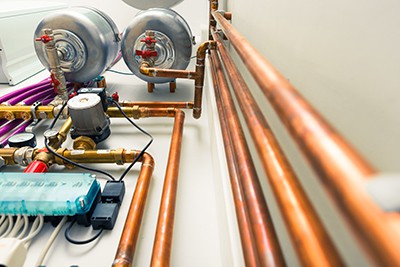
Much like solar cells within a photovoltaic module are designed to maximize the amount of light it absorbs, the solar collector’s goal is to get as much heat out of the light from the sun. While heating can be done without this, it greatly improves the heat output of the system. Next, is the tubing within the solar collector. These tubes run from the solar collector into your house once the water is hot enough. Third is the heat-transfer fluid. This can be things like glycol or in more simple systems, just water. This heat-transfer fluid is used to ultimately heat the water that you will be using in your shower or from your sinks. The final part of the system are the actual solar water heaters. This is the storage unit which holds the water heated by your rooftop system. This hot water heater is usually still capable of heating water on its own just in case your rooftop system is unable to provide enough water at a given time for you and your family.
How Much Money Can I Save On My Heating Bill With A Solar System?
The amount of money that can be saved from the use of a solar energy heating device is entirely dependent on your personal usage and the sizing of the system.

The average home uses roughly eighteen percent of their energy demand to heat water. Assuming you design a system that meets your full hot water demand, you can expect to lower your energy bills by around eighteen percent. This can be viewed as your own personal power plant mounted on the roof of your home saving you money.
If a household uses 1000 kilowatt-hours per month, this represents a savings of 180 kilowatt hours per month or 2,160 kilowatt-hours per year. Assuming the homeowner pays ten cents per kilowatt hour, solar heating systems could save them up to $18 per month or $216 per year.
This is money that can instead be used for something more enjoyable than lining the pockets of your local utility. Once the solar water heater has paid for itself, owners are essentially receiving free hot water for the rest of their lives. Additionally, these solar water heaters are very low maintenance and require far fewer repairs over their lifetime saving owners additional funds annually.
Is There A Way To Reduce The Cost Of A Solar Heating System?
One of the biggest concerns among homeowners is that the home solar energy cost will be too great to ever see a reasonable return on investment. Luckily, there are a variety of ways to reduce the overall cost of the system. Similar to solar PV, a heating system that runs on solar is eligible for the Federal Investment Tax Credit (ITC).
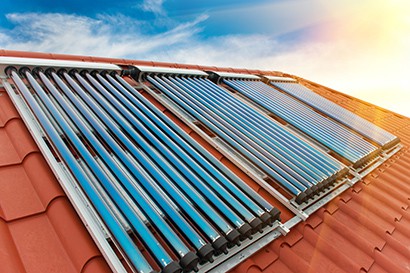
The ITC is currently equal to 30% of the total installed cost of a system that utilizes qualifying renewable technologies. This reduces the cost of the system by a full 30% by receiving a tax credit on the following year’s taxes equal to this value. As an example, let’s say your full system cost, including the water tank, heat exchanger and solar collector, is $7,500. You would pay this amount out of pocket once the project is complete. Then, when you go to pay your taxes, you would be eligible for a credit equal to 30% of this value, or $2,250. This means that your total out of pocket cost for the system is reduced to only $5,250. This can greatly reduce the payback period for the system.
Additionally, many states have programs currently in place that allow renewable technologies, such as solar panels or heating from solar to avoid paying sales tax. So, for the same $7,500 system at a 6% sales tax, this represents an additional savings of $450. Every state has their own set of financial incentives available for renewables and so further research can prove to be financially advantageous.
The home solar energy cost of heating has never been lower. This is largely thanks to the combination of improved technology, wider adoption, and available financial incentives that drastically lower the payback period of this type of investment. The idea of having your own personal power plant installed on a rooftop has intrigued thousands of consumers. Solar panels in tandem with a heating system powered by the sun can reduce your energy bills and allow you to do your part to be better to the earth. Every home or business owner’s situation is slightly different, but by becoming a more informed consumer, they can more accurately asses the validity of a solar heat exchanger as an additional part of the existing heating system.
